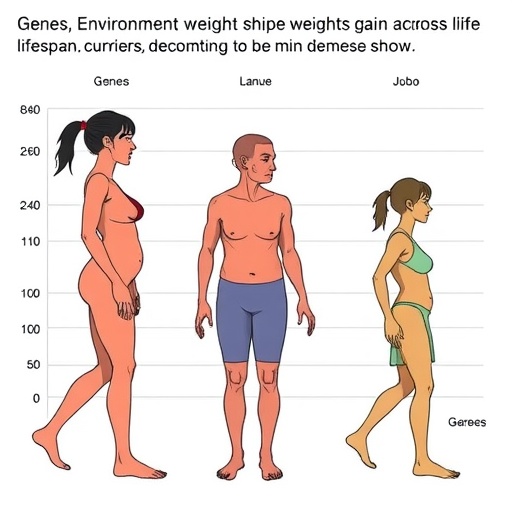In the delicate realm of neonatal intensive care, thrombocytopenia remains one of the most frequently encountered hematological challenges, especially among preterm infants. Traditionally, the management of low platelet counts in this vulnerable population has leaned toward liberal use of platelet transfusions, guided largely by precautionary thresholds that favored intervention to minimize bleeding risks. However, emerging evidence over the past decade has gradually shifted this paradigm. Recent studies have illuminated a concerning association between liberal transfusion policies and increased morbidity and mortality rates, prompting Neonatal Intensive Care Units (NICUs) worldwide to reconsider their clinical approaches. In a groundbreaking development, a team led by Lalos, Brumfiel, and Viehl has taken decisive steps toward changing the management landscape by spearheading the design and implementation of restrictive transfusion thresholds. Their work, published in 2025 in the Journal of Perinatology, has profound implications for neonatal care, striking at the heart of how platelet transfusions are administered and challenging longstanding conventions.
Thrombocytopenia, defined as a platelet count below 150,000 per microliter, frequently complicates the clinical picture of preterm neonates due to their immature hematopoietic systems and exposure to various perinatal insults. These low platelet counts predispose infants to hemorrhagic complications, making timely intervention critical. Historically, platelet transfusion thresholds were set conservatively high, often around 50,000 to 100,000 platelets per microliter, out of an abundance of caution. This approach was based on the assumption that higher platelet counts would directly correlate with decreased bleeding risk and better clinical outcomes. However, the medical community has increasingly questioned whether such aggressive strategies inadvertently expose neonates to risks associated with transfusions themselves.
The risks linked to platelet transfusions are multifaceted. Beyond the immediate procedural risks—such as transfusion reactions and volume overload—there is growing recognition of transfusion-associated immunomodulation, which can alter immune responses and potentially increase susceptibility to infections and inflammatory conditions. Additionally, the scarcity and cost of platelet products and regulatory concerns about donor compatibility underscore the importance of judicious use. The new investigative efforts led by Lalos and colleagues sought to harmonize transfusion practice by establishing evidence-based, restrictive platelet transfusion thresholds to reduce unnecessary transfusions without compromising neonatal safety.
To accomplish this, the team conducted a rigorous, multi-phased project within a high-acuity NICU setting. Their approach commenced with a comprehensive review of existing guidelines and literature, revealing substantial variations in clinical practice and an absence of universally accepted transfusion criteria. Recognizing that protocol heterogeneity could contribute to disparate outcomes, the researchers designed a standardized guideline that carefully calibrated transfusion thresholds, balancing bleeding risk against the dangers of overtransfusion. This guideline introduced lower platelet count thresholds for transfusion initiation with carefully stratified decision points aligned to clinical variables such as the infant’s gestational age, clinical stability, and presence of active bleeding or invasive procedures.
Implementation of the restrictive guideline was accompanied by extensive staff education and multidisciplinary collaboration, ensuring that neonatologists, hematologists, nurses, and transfusion specialists shared a unified understanding of the rationale and operational framework. Over the course of several months, data were meticulously collected on transfusion frequency, neonatal clinical outcomes, and any adverse events. The results were striking: restrictive thresholds led to a substantial decrease in the number of platelet transfusions administered without increasing the incidence of clinically significant bleeding episodes. In fact, the reduction in transfusions was linked with a decrease in transfusion-related complications, shedding light on the double-edged sword the practice had long represented.
The implications of this shift extend beyond the immediate NICU environment. By reducing transfusion exposure, the guideline may contribute to diminished healthcare costs, conserved blood product resources, and improved long-term health trajectories for preterm neonates. The study also argues for harmonization across neonatal units to foster improved comparability of outcomes and facilitate broader adoption of best practices. Its findings challenge entrenched dogma, powerfully advocating for a more nuanced understanding of thrombocytopenia management that prioritizes both safety and efficacy.
The clinical significance of this research cannot be overstated. It underscores the criticality of grounded clinical decision-making informed by robust data rather than tradition or untested assumptions. Neonatal thrombocytopenia, once treated under a model of maximal prophylaxis, now beckons a sophisticated approach that appreciates the complexity of platelet physiology, the intricate interplay of neonatal hemostasis, and the unintended consequences of overtransfusion. The nuanced strategy borne out by Lalos and teams invites clinicians worldwide to re-evaluate thresholds and protocols, potentially resetting the standard of care.
In addition to the direct clinical benefits, this work shines a light on the importance of guideline-driven transfusion medicine as a pillar of neonatal safety. In an era where personalized medicine and precision care are gaining momentum, the study demonstrates how even incremental tweaks—rooted in evidence and executed collaboratively—can catalyze transformative improvements in patient outcomes. The standardization of transfusion practices also speaks to broader healthcare imperatives of quality assurance and risk mitigation within the dynamic context of neonatal intensive care.
From a physiological perspective, the study underscores the delicate balance between platelet counts and hemostatic competence in newborns whose clotting systems differ markedly from adults. Preterm infants possess functional differences in platelet adhesion, aggregation, and coagulation factor activity that influence bleeding risks independently of platelet numbers alone. Thus, rigid transfusion triggers based solely on numerical thresholds may fail to capture the individualized bleeding risk or resilience of each neonate. The restrictive approach proposed embraces this complexity, integrating clinical judgment rather than rigid lab cutoffs as the cornerstone of management.
Furthermore, the research addresses a critical gap in evidence-based neonatal transfusion practices. Past guidelines were often extrapolated from adult data or informed by expert consensus rather than rigorous clinical trials. The new work by Lalos and colleagues bridges this gap by presenting a validated, prospectively implemented protocol, which can serve as a foundational reference for future clinical trials. It invites ongoing scrutiny, refinement, and validation across diverse neonatal populations and practices, stimulating a much-needed discourse on the optimal integration of transfusions in neonatal care pathways.
The intricate coordination and interdisciplinary effort required to enact and evaluate this new policy reveal the complexity inherent in modern NICU care. It is not solely a matter of altering transfusion thresholds but requires institutional commitment, continued education, and data-driven quality improvement mechanisms. The study’s success also highlights a progressive clinical culture that embraces evidence over inertia, carefully balancing innovation with patient safety amidst the inherent vulnerabilities of the neonatal population.
Critically, the study’s data reinforce the notion that more transfusions do not equate to better outcomes. This challenges clinicians to deeply interrogate the underpinnings of their clinical heuristics and to consider the full spectrum of risks and benefits associated with transfusions. The concept of “doing less” in medicine is often counterintuitive but can yield profound benefits when grounded in science. By shifting toward restrictive transfusion practices, neonatal teams may mitigate avoidable iatrogenic harm and foster improved survival and developmental outcomes in preterm infants.
Looking forward, the pioneering work by Lalos et al. sets a robust platform for ongoing research into biomarkers and individualized risk stratification strategies that could further refine transfusion triggers. Advances in neonatal hemostasis monitoring, platelet function assays, and emerging technologies may one day enable truly personalized transfusion medicine in NICUs, where decisions transcend static numerical counts to embrace dynamic physiological insights.
In conclusion, the development and implementation of restrictive platelet transfusion thresholds represent a seismic advancement in neonatal thrombocytopenia management. It moves the field beyond conservative, risk-averse dogma toward a more sophisticated, evidence-led approach that prioritizes both efficacy and safety. This transformative research underscores the profound impact that carefully crafted clinical guidelines can have on patient care, resource utilization, and healthcare outcomes in some of the most vulnerable patients. The study by Lalos, Brumfiel, Viehl, and collaborators is poised to reshape transfusion practices across neonatal units worldwide, offering a new beacon of hope in the complex fight against thrombocytopenia in preterm neonates.
Subject of Research: Management of thrombocytopenia in preterm neonates through development and implementation of restrictive platelet transfusion thresholds.
Article Title: Development and implementation of restrictive platelet transfusion thresholds in a neonatal intensive care unit.
Article References:
Lalos, N., Brumfiel, A., Viehl, L.T. et al. Development and implementation of restrictive platelet transfusion thresholds in a neonatal intensive care unit. J Perinatol (2025). https://doi.org/10.1038/s41372-025-02302-4
Image Credits: AI Generated
DOI: https://doi.org/10.1038/s41372-025-02302-4
Tags: clinical guidelines for NICUsevidence-based neonatal care practicesimplications of platelet transfusionsJournal of Perinatology studiesliberal vs restrictive transfusion policiesmorbidity and mortality in neonatesneonatal hematological challengesneonatal intensive care advancementspreterm infant bleeding risksresearch on neonatal transfusion thresholdsrestrictive platelet transfusion practicesthrombocytopenia management in neonates





